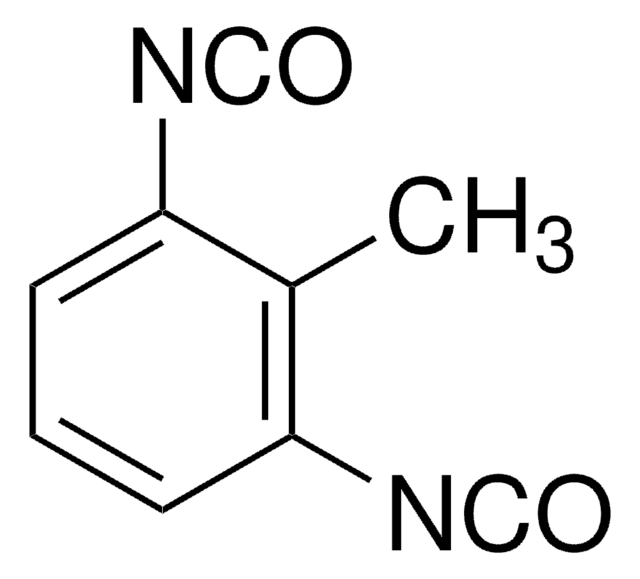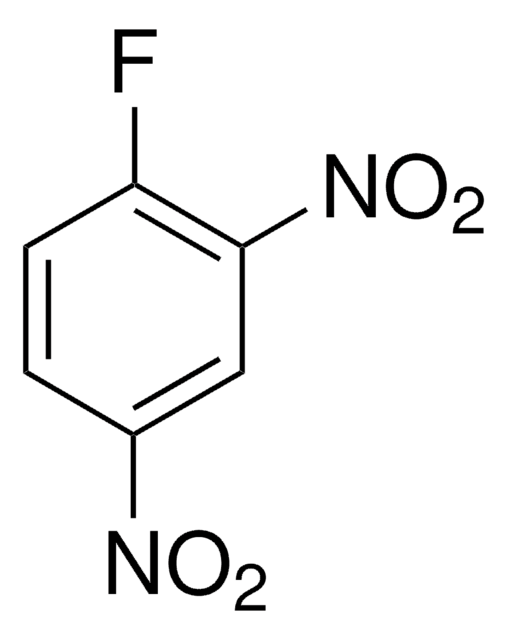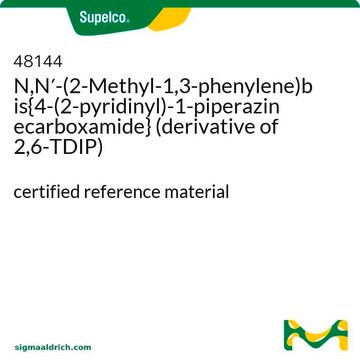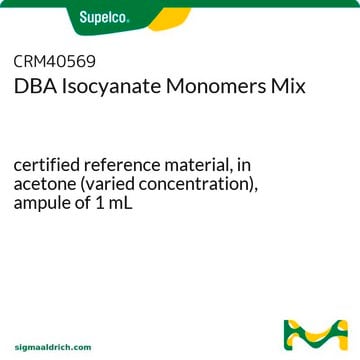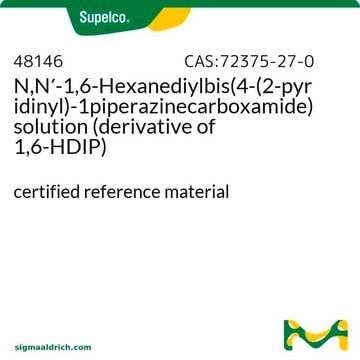33493
2,6-TDI
analytical standard
Synonym(s):
Tolylene-2,6-diisocyanate, 2-Methyl-m-phenylene diisocyanate
About This Item
Recommended Products
grade
analytical standard
Quality Level
autoignition temp.
>1148 °F
shelf life
limited shelf life, expiry date on the label
technique(s)
HPLC: suitable
gas chromatography (GC): suitable
refractive index
n20/D 1.571 (lit.)
bp
129-133 °C/18 mmHg (lit.)
density
1.225 g/mL at 25 °C (lit.)
application(s)
cleaning products
cosmetics
environmental
food and beverages
personal care
format
neat
storage temp.
2-8°C
SMILES string
Cc1c(cccc1N=C=O)N=C=O
InChI
1S/C9H6N2O2/c1-7-8(10-5-12)3-2-4-9(7)11-6-13/h2-4H,1H3
InChI key
RUELTTOHQODFPA-UHFFFAOYSA-N
Looking for similar products? Visit Product Comparison Guide
General description
Find all available reference materials for compounds listed in 10/2011 here
Application
Signal Word
Danger
Hazard Statements
Precautionary Statements
Hazard Classifications
Acute Tox. 2 Inhalation - Aquatic Chronic 3 - Carc. 2 - Eye Irrit. 2 - Resp. Sens. 1 - Skin Irrit. 2 - Skin Sens. 1 - STOT SE 3
Target Organs
Respiratory system
Storage Class Code
6.1A - Combustible acute toxic Cat. 1 and 2 / very toxic hazardous materials
WGK
WGK 2
Flash Point(F)
230.0 °F - closed cup
Flash Point(C)
110 °C - closed cup
Personal Protective Equipment
Choose from one of the most recent versions:
Already Own This Product?
Find documentation for the products that you have recently purchased in the Document Library.
Customers Also Viewed
Our team of scientists has experience in all areas of research including Life Science, Material Science, Chemical Synthesis, Chromatography, Analytical and many others.
Contact Technical Service